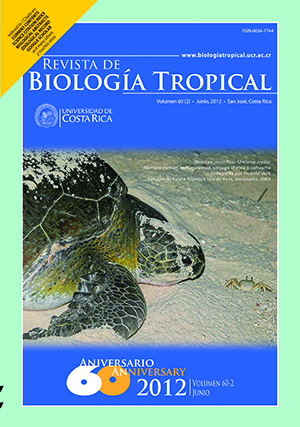Abstract
Nile tilapia (Oreochromis niloticus), which is exotic to South America, is the most common species caught in artisanal fisheries at the Barra Bonita Reservoir, Southeastern Brazil. This species is of great socio- economic importance for the region and keeps active a population of about 500 fishers. In the present study we assess reproduction, food dynamics and level of exploitation of O. niloticus, caught by artisanal fisheries in the Barra Bonita Reservoir. Specimens were collected monthly, from July 2004-June 2005, and a total of 1 715 specimens were analyzed. Each specimen was examined to obtain biological and biometric data: standard length (cm), total weight (g), reproductive data (sex and stage of maturation), and stomach contents (empty, partly full, and full). We also estimated the sex ratio (by macroscopic observation of gonads), reproductive period (by ovarian development and seasonal average of gonadosomatic index in females), and feeding habits (by stomach contents). The possible relationship between abiotic factors and the reproductive period was statistically verified using Spearman’s Rank Correlation. The FiSAT (ELEFAN I) package was used to assess growth parameters, mortality rates and to infer exploitation rate from standard length frequencies. The O. niloticus population had a sex ratio of 1.3:1 (M:F). Results indicated that ripe females were captured throughout the year, with a higher fre- quency during the winter-2004 (with a frequency of 59%, at a mean temperature of 20.5°C), and in spring-2004 (with a frequency of 60.5% at a mean temperature of 21.18°C). The GSI mean values obtained by season were: winter-2004: 1.71; spring-2004: 1.72; summer-2005: 0.80, and autumn-2005: 1.19. The Spearman correlation indicated positive values with respect to pH, dissolved oxygen, electric conductivity, transparency and chlorophyll a, and negative values with respect to temperature, accumulated rainfall and altimetric benchmark. The main food items were phytoplankton and periphytic algae, observed in 99.6% of the analyzed stomachs. The estimated growth and mortality parameters were: L∞=33.60cm, k=0.63/year, longevity= 4.76years, Z=2.81/ year, M=1.20/year and F=1.61/year. The weight-length relationship was Ln Wt=–2.8532+2.8835 Ln Lp. The estimated yield per recruit values were as follows: E=0.570, Emax=0.776, E0.1=0.604 and E0.5=0.349. These results indicate that a well established population of O. niloticus is present at Barra Bonita Reservoir; with an active reproduction throughout the year, more intense during winter and spring, and that O. niloticus is a phyto- planktophagus species. There were no indications that this species is being overfished, we therefore recommend that, due to its exotic condition, no restrictions need to be taken on its fishing activities.##plugins.facebook.comentarios##

This work is licensed under a Creative Commons Attribution 4.0 International License.
Copyright (c) 2012 Revista de Biología Tropical
Downloads
Download data is not yet available.






